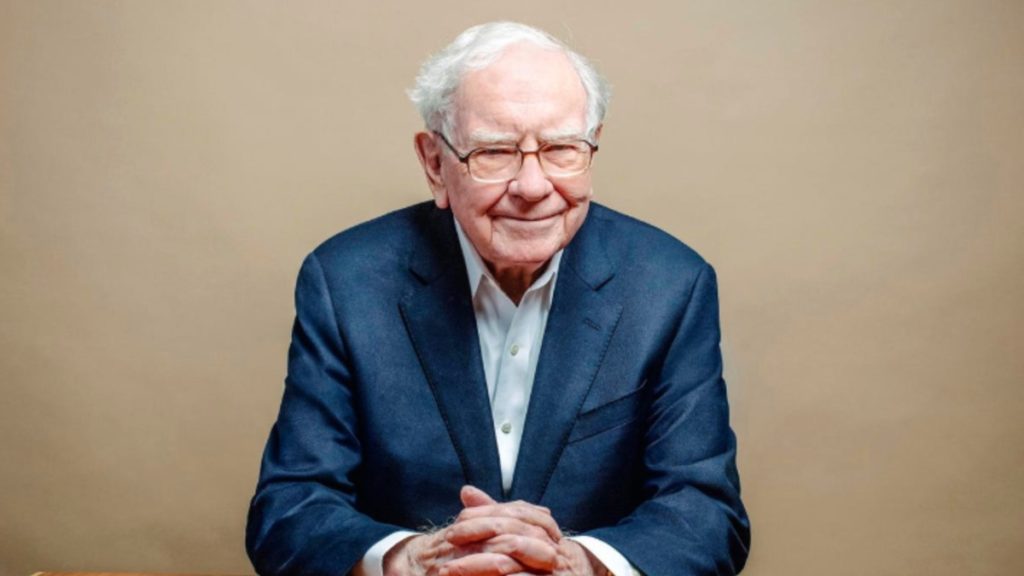Capturing Attention and Collective Agreement
Capturing Attention and Collective Agreement
A new phenomenon has begun to affect market prices in unexpected ways. This is the growing power of individual investors who band together to move prices. The first documented instance happened to be in the price movement of a stock called GameStop. The following is a description of what happened and how this phenomenon may provide opportunities.
25-miles into a desolate area of the Western U.S. known as the Salt Flats, there is an 87-foot tall cement sculpture of a tree that bears multi-colored spheres. It is an odd looking sculpture that, at first glance, seems to have very little connection to anything around it. So much so that a Las-Vegas comedian once pointed out, “you know the amazing thing about that is NOT that someone came up with the idea of building such an odd structure. What’s amazing is that a second person said, “wow, that’s a really great idea!”

Perhaps there are some established and experienced investors who would feel the same way about many of the ideas driving stock prices today. On any given week in the market, the ideas behind the price moves of some stocks can appear downright baffling to some, while appearing completely rational to others.
The story behind GameStop’s explosive spike in prices is a fascinating illustration of this. To keep the story short, let’s recall that Dr. Michael Burry, a professional investor famous for betting against the mortgage industry in 2007, wrote an opinion in June of 2020 that GameStop was undervalued. His idea was that so many hedge funds had been selling the stock short that they had pushed the price too low. Additionally, he felt the new management team for GameStop was on a fast track to recovery.
Burry contended that these funds were assuming the company would go under after the pandemic. Assuming that a short sale would be easy money for them, they were overlooking the reality of the company’s prospects. Burry felt this was an opportunity for a value investment, meaning that if an investor were to put money into the stock and hold it for two or three years, that it could pay off well.
A few weeks later, Keith Gill, an amateur analyst who was active on Youtube and Reddit, further articulated Dr. Burry’s analysis. Gill, a longtime customer of GameStop’s stores, agreed with Burry’s thesis, and expanded on it to explain why it was an exceptional case.
He published opinions on the subreddit WallStreetBets, and produced a YouTube video suggesting that GameStop’s business was far more solid than the hedge funds had judged it to be. He suggested in August of 2020 that if technical traders began moving into the stock, the resulting short squeeze could be explosive because, at the time, the stock was the most heavily shorted security in the market.

These sentiments turned out to be quite prescient, because the price did rise rapidly. As the idea gathered steam and more people became aware of the situation, both amateur and professional investors began to take notice. Many of these investors not only came to agree with Dr. Burry and Mr. Gill’s opinions, but they also began to take action on the idea.
This collective agreement became apparent in the price of the stock as it moved from $5 per share in the summer of 2020, to $16 per share by the end of the year. What came next, however, shocked the world.
As some hedge funds began to unwind their short positions at the close of 2020, it became apparent that they were in trouble. The price did indeed start to rise rapidly as many short sellers scrambled to exit even as readers of the WallStreetBets forum trumped the opportunity to take advantage of the situation. January 13th 2021 marked the day that the short squeeze kicked into high gear as the stock rose over 50% in a single day. Within two weeks, the price had spiked to a peak of $483 per share.
But that price proved to be too much for even the most enthusiastic buyer, and the stock rapidly fell lower. It is worth noting that even after prices fell from that peak, the stock price re-established an upward trend and held a share price of well over 100 dollars for most of 2021.

Some investors might think this story is little more than an amusing curiosity, however the story holds the key to an important pattern that stock investors in today’s market simply can’t afford to overlook. This is the pattern of tracking attention and collective agreement.
We’ll take a closer look at this pattern in the next segment.
Attention and Collective Agreement Milestones
People involved in marketing and sales know that packaging an idea in a way that gains a customer’s attention is the first task they must accomplish. A customer won’t won’t take action to buy something they don’t know exists. People are more likely to buy something they feel familiar with.
This is very true for the stock market. The more attention a stock gets, the more investors at all levels are likely to buy it.
Today’s investors have access to a huge variety of trade ideas and information sources, so it is much easier for a stock to gain the attention of potential buyers than it ever used to be. But attention alone is not enough to significantly move the stock’s price. There must also be a certain degree of agreement among buyers that the stock has excellent prospects for the future. If a small collection of enthusiastic buyers becomes a groundswell of interest, then the stock will likely trend higher and generate fabulous returns.

Is it possible to spot such opportunities before they become meme stocks or the most interesting headline on a news feeds? Yes, but the truth is, like any indicator, there is no guarantee. After all, when Keith Gill first published his opinion on WallStreetBets, he got a lot of criticism from others reading the forum. Early on, most people thought his ideas were wildly optimistic. Had they not become more widely read and accepted, and had not traders decided to take action, then things may have played out differently.
GameStop provides a perfect example of how investors can identify four key milestones for tracking attention and collective agreement to identify big opportunities.
- Milestone #1: A trusted voice puts forward a publicly-circulated idea. This is how it starts. The opportunity presents itself within an idea. This idea may not be widely accepted initially, but if the source is from someone, or some organization, that many people will likely listen to, then the genesis of spreading this information has been established.
- Milestone #2: A voice of agreement appears and gains traction. It isn’t enough for someone to simply have a good idea. Some ELSE must agree with it. If that second someone also can spread their opinion of agreement widely, it will help with a rapid adoption of the idea.
- Milestone #3: Professional investors become involved. The most influential investors in the market are those who control billions of dollars. When they start listening to the idea, it is likely the idea has reached a critical mass and soon more investors may quickly agree that the idea, and any stock behind it, has value.
- Milestone #4: Amateur traders and investors decide to act. Once a larger following becomes aware of, and involved with, the story behind the stock, then the price can rise very rapidly, and it may not be very long before the share price reaches a climactic peak.

Some variation of these four milestones has been followed in nearly every major stock market opportunity over the last century. What’s unique about today’s stock market is how quickly an idea can spread to a large number of retail and professional investors. This democratization of communication has accelerated the tracking attention and collective agreement pattern in unprecedented ways. There are now more opportunities for asymmetric returns following this pattern than ever before.
Keep in mind that the pattern includes all four milestones; however, if you wait until you see all four milestones, the opportunity has likely already played out. The best time to maximize reward to risk is likely to be found somewhere after the first or second milestone.
How then can an investor or trader use this information? Let’s look at the preferred method some of the best investors in history have used for capturing asymmetric returns.
High Reward to Risk Ratio Trades Using the Four Milestones
The hunt for asymmetric returns can probably be traced back a far as Benjamin Graham and the book he authored called, “The Intelligent Investor.” The ideas in that book were perhaps the first and best articulation of what is now referred to as value investing. The book was published in 1949, and was read by many investment professionals at the time.
But, it took seven years before a young investment professional started a small hedge fund based on those ideas. That young professional was Warren Buffet, who, at the age of 25, became the second voice agreeing with the first, that value investing was a good idea. It took a bit longer for value investing to become a household word, but as the idea spread and more institutional money decided to act on it, those who were early to Buffet’s fund reaped handsome rewards. By being an early adopter of this value investing idea, Buffet and his team achieved legendary success.

Value investing can be distilled into five simple rules:
- Pick 40 excellent stocks with great prospects, and buy them when they are value priced.
- Risk 2% on each stock initially.
- Hold your position for at least one year.
- Cut your losses if the position has dropped by more than half its value after one year.
- Take profits from the position after three years, but only if the stock has made more than a 400% return by that point.
To be clear, not every value investor follows these rules precisely, but they are a fair representation of what the average value investor does. The beauty of this system is that it relies on asymmetric returns. As a result, you don’t have to be a genius stock picker to have great returns. In fact, if you tightly control risk, only one out of four stocks needs to perform very well to make up for all the losses made by the others. Value investing like this is a simple way of spreading out risk.
In the next segment, we’ll take a closer look how this value investing idea can become a general strategy adapted to any trader’s time frame.
Examples and Stop Loss Orders
The strategy for hunting down asymmetric returns is actually much more fluid than most people realize. It can be adapted for any instrument and over any time frame. While the most well-known investors have used this strategy over long periods of time, the truth is that many highly-successful traders who are not public figures choose to use this strategy as part of their trusted trading process. Let’s give you some theoretical examples of how such traders might work.

Trader #1: Tracy, the Tech Stock Timer
Imagine a trader who likes to trade only highly-liquid, well-known tech stocks, and who only wants to trade them on a shorter time frame, say one to four weeks. If we assume that this trader has excellent research that allows them to select excellent candidates, then they will still need a way to allow for profits on their best trades to far outstrip their risk on the rest of their trades.
In the Foundations course, you learned that the Win Big approach anticipates making big gains by accepting small losses and a less-than-50% win rate. The easiest way for Tracy to accomplish her goal is to use a tight, trailing stop on all her trade selections. Statistically, this should set Tracy up for a 36% win rate, and asymmetric profits even if what came along were only random results.
That might not sound inviting to some traders, but those who look for asymmetric gains understand it is part of the package. With time and experience such traders may increase their win rate well above 36%, but even if 36% is all they can get, their occasional windfall trades will take over and give them the gains they seek. Traders like Tracy are also likely to benefit from the use of option strategies as well.
Trader #2: Paul, the Patient Pharmaceuticals Player
Imagine a trader who hunts down the opportunities that persist among bio-tech and pharmaceutical stocks. These stocks certainly have potential for windfalls, and getting into the right trade early enough will certainly depend on being able to follow a trusted voice able to formulate ideas others agree with.
If Paul has a good source of ideas for stocks in this area, then he can expect to use trailing stops in a similar fashion as Tracy. Such a method will allow him to trail along for big profits on a minority of his trades. As long as he limits his risk to one or two percent of his portfolio, he can absorb the losses that may come along as he waits for the winners to pay off.
Trader # 3: Elizabeth: the Economic Researcher
Now imagine an investor who looks for asymmetrical returns among energy, basic materials, or precious metals stocks. She uses her understanding of Economic and Business Cycles to help her identify the best conditions for investing in companies that invest in mines, wells, or production facilities. These inflation-sensitive investments can benefit greatly when conditions turn out favorably for them. Again, to be successful, Elizabeth needs ideas from a trusted source that others also agree with. Remember the first two milestones: Someone needs to present the idea and someone else with influence needs to agree with it.
Assuming she can find a trusted and influential voice, limits her risk on trades, and patiently persists despite winning on a minority of her choices, she will find that she can do very well so long as she can recognize whether the spread of the idea has moved from a few trusted voices into a larger circle of acceptance. Her exit is actually signaled by milestone 4: Amateur traders and investors decide to act.
These three scenarios are by no means definitive, but hopefully you can see how each of them combined the four-step pattern of attention and agreement with the value investing style of hunting for big wins.
Conclusion
Anyone can improve their skills as a stock investor by understanding the forces that move the market. Whether it be an understanding of economic or business cycles, or the comprehension of how professionals market their trade ideas, knowing how to sort through trusted research is a key factor. We hope that the valuable information of this course has pointed the way for you to include it into your trusted trading process and to improve your use of our education.

